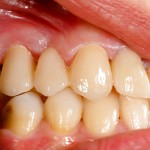
A number of occlusion rehabilitation approaches have been proposed with the three main lateral occlusion schemes being: canine-guided occlusion (CGO), group function occlusion (GFO), and bilateral balanced occlusion (BBO). The schemes differ in the amount of occlusal contact during lateral movement but have similar contacts at maximum intercuspation. The aim of this review was to assess the clinical implications of different lateral occlusion schemes.
Methods
Searches were conducted in PubMed, Google Scholar and Cochrane Central Registrar of Controlled Trials. Two study categories were considered for this review: group 1, comparative studies, in which the study compares multiple lateral occlusion schemes, and group 2, clinical outcome studies, in which the study describes the applied occlusion scheme for the restored dentition. Only English language studies were considered. A narrative summary of the findings was presented.
Results
- 26 studies were included; 13 comparative studies (group1) and 13 long-term studies (group 2)
- CGO and GFO were the most commonly evaluated schemes.
- Group 1 studies evaluated the impact of lateral occlusion schemes on muscular electromyographic (EMG) activity, condylar displacement, chewing, and mandibular movement.
- Group 2 studies evaluated the impact of restored occlusion on longevity, patient comfort, and pathologic consequences.
- CGO was associated with narrower chewing and less EMG activity of the masticatory muscles during clenching.
- GFO was associated with wider mandibular movement and quicker chewing. During chewing, there was no difference in EMG activity between the 2 lateral occlusion schemes.
- Furthermore, the long-term studies indicated that there is no difference between the 2 schemes in patient comfort and restoration longevity.
Conclusions
The authors concluded:
Within the limitations of this review, the following can be concluded:
- There are some differences between the different lateral occlusion schemes in relation to parafunctional muscle activities and the magnitude of mandibular movement. However, physiologic function and patient acceptance appear to be minimally influenced by the lateral occlusion scheme. Nevertheless, the clinical significance of the reported differences cannot be confirmed since the long-term studies have confirmed the suitability of CGO and GFO.
- CGO or GFO are equally acceptable when restoring dentition. Multidirectional freedom of mandibular movement appears to be physiological. The evidence supports a flexible principle of occlusion rather than a preconceived occlusion theory.
- Similar lateral occlusion principles can be considered for implant prosthesis.
Comments
This review has searched 3 large databases although it has been restricted to English language studies. In is not clear whether independent selections of included studies has taken place and there is no quality assessment of the included studies presented. The included studies are well summarised and there is a good discussion. However, the number of patients included in the studies is relatively low with the range being 7-53 patients. This suggests that the findings should be treated with caution. While this review focuses on fixed restoration an earlier review (Dental Elf -18th Oct 2012) considered compared BBO and CGO in complete denture construction. That review included 7 RCTs with the majority reporting no difference between the two schemes but again they were relatively small in size.
Links
Abduo J, Tennant M. Impact of lateral occlusion schemes: A systematic review. J Prosthet Dent. 2015 May 5. pii: S0022-3913(15)00125-0. doi: 10.1016/j.prosdent.2014.04.032. [Epub ahead of print] Review. PubMed PMID: 25957242.
Dental Elf -18th Oct 2012 – Do complete dentures have to have a balanced occlusion?

Lateral occlusion schemes – no differences? http://t.co/HxFazzvliS
Canine-guided or group function occlusion? http://t.co/HxFazzvliS
No differences between lateral occlusion schemes http://t.co/HxFazzvliS
Canine-guided or group function occlusion-no differences seen. http://t.co/HxFazzvliS
Don’t miss – Lateral occlusion schemes – no differences? http://t.co/HxFazzvliS
@TheDentalElf CD occlusion usually w/group fxn, but in East culture,we often ate w/chopsticks or gnawed hole apple.CGO combined BBO’s ideal.